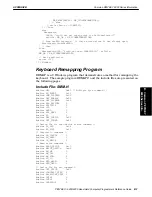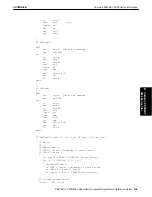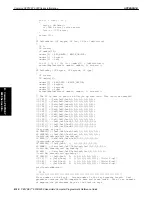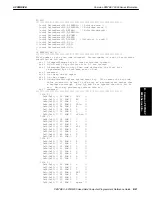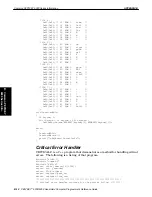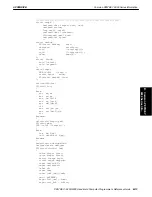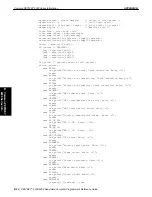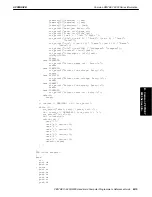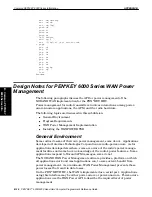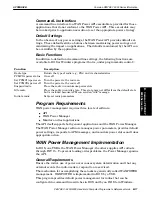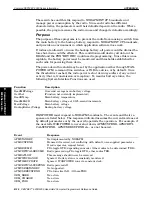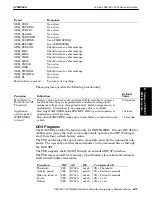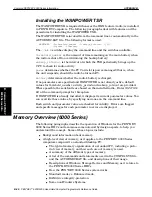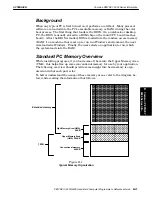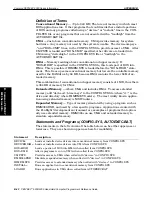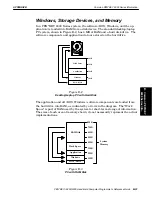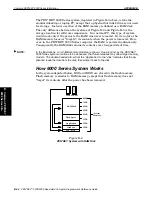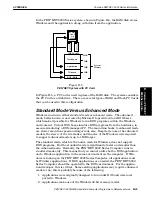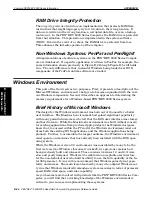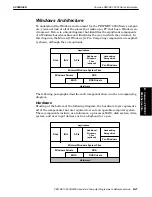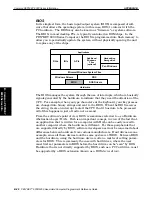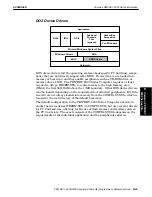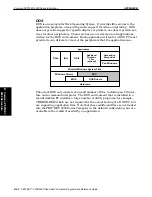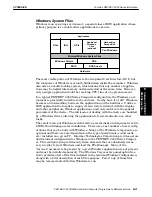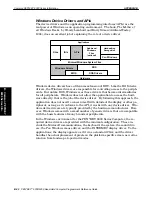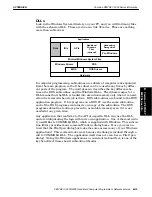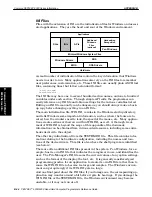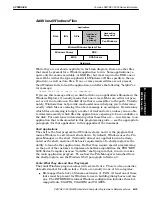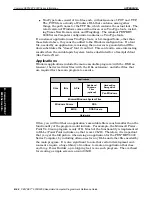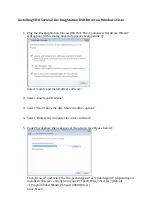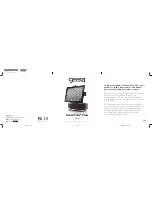
APPENDIX B
Common PEN*KEY 6000 Series Information
PEN*KEY
R
6200/6300 Hand-Held Computer Programmer’s Reference Guide B-21
Background
When any typical PC is first turned on, it performs a cold boot. Many pieces of
software are loaded into the PC's executable memory, or RAM, during the coldĆ
boot process. The first thing that loads is the BIOS. On a notebook or desktop
PC, the BIOS is usually stored in a ROM chip on the main CPU board (motherĆ
board). After the BIOS is loaded, DOS is loaded into the random access memory
(RAM). In a machine that is set up to run in a Windows environment, the next
item loaded is Windows. Finally, the user selects an application to run, which
the system loads into the RAM.
Standard PC Memory Overview
While installing programs, if you load some of them into the Upper Memory Area
(UMA), this helps free up some conventional memory for use by your application.
The following overview should provide some insight into how memory is orgaĆ
nized and what each part is for.
To better understand the usage of these memory areas, refer to the diagram beĆ
low, while reading the information that follows.
ÎÎÎÎÎÎÎÎÎÎÎ
ÎÎÎÎÎÎÎÎÎÎÎ
ÎÎÎÎÎÎÎÎÎÎÎ
ÎÎÎÎÎÎÎÎÎÎÎ
ÎÎÎÎÎÎÎÎÎÎÎ
ÎÎÎÎÎÎÎÎÎÎÎ
ÎÎÎÎÎÎÎÎÎÎÎ
ÎÎÎÎÎÎÎÎÎÎÎ
ÎÎÎÎÎÎÎÎÎÎÎ
ÎÎÎÎÎÎÎÎÎÎÎ
ÎÎÎÎÎÎÎÎÎÎÎ
ÂÂÂÂÂÂÂÂÂÂÂ
ÂÂÂÂÂÂÂÂÂÂÂ
ÂÂÂÂÂÂÂÂÂÂÂ
ÂÂÂÂÂÂÂÂÂÂÂ
ÇÇÇÇÇÇÇÇÇÇÇ
ÇÇÇÇÇÇÇÇÇÇÇ
ÇÇÇÇÇÇÇÇÇÇÇ
Conventional memory
640 KB
Upper Memory Area
(UMA) 384 KB
High Memory Area (HMA)
64 KB
Extended memory
1 MB
Figure BĆ1
Typical Memory Organization
B. Common PEN*KEY
6000 Series Info.

